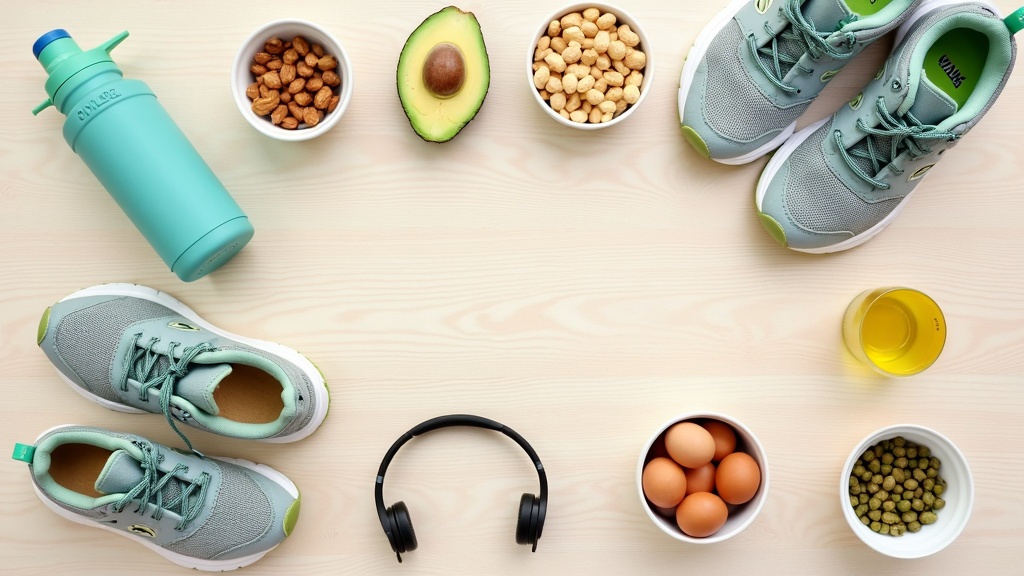 Going lowcarb with a keto diet and adding fitness can be a sweet combo, but not everyone realizes that low intensity cardio fits really well with ketosis. A lot of what you read about keto focuses on weightlifting or short, hard workouts. But steady, easy movement like brisk walking actually works with your body’s fat burning system in a pretty cool way.
Going lowcarb with a keto diet and adding fitness can be a sweet combo, but not everyone realizes that low intensity cardio fits really well with ketosis. A lot of what you read about keto focuses on weightlifting or short, hard workouts. But steady, easy movement like brisk walking actually works with your body’s fat burning system in a pretty cool way.
When I started keto, I wondered if I would have to do HIIT or intense lifting to get results. That is not the case at all. If you’re new to the whole keto and fitness thing, you don’t need fancy gear or a complicated plan. You just need to know how your energy system works, and how steady cardio can unlock more fat burning without burning you out.
This guide spells out how keto and low intensity cardio work together, the benefits, and how to get started. If you’re trying to lose weight, boost energy, or just feel better overall, this mix is worth checking out. Let’s dig in and see how you can make the most of fat burning without a lot of stress.
Understanding Keto and Low Intensity Cardio
Keto is short for ketogenic diet, a lowcarb, high fat way of eating that pushes your body into ketosis. In ketosis, your body switches from burning carbs for fuel to breaking down fat into ketones which your muscles and brain can use for energy. Low intensity cardio is steady, lower impact exercise like walking, cycling, or slow swimming that keeps your heart rate in a moderate range but doesn’t leave you panting for breath.
Why Pair Keto With Low Intensity Cardio?
- Low intensity cardio uses more fat for fuel, which lines up with keto’s focus on fat burning.
- This combo is easier on your body, especially when you are just starting keto or adjusting to lower carbs.
- You don’t need complicated equipment. Walking, jogging, or biking around your neighborhood works great.
Instead of heading right into high intensity workouts while your body is adapting to keto, gentle, steady movement can help your energy and keep you consistent. This is especially true if you notice the infamous “keto flu” symptoms during the first week or two; slow movement eases you in and supports your mood, too.
Benefits of Low Intensity Cardio on Keto
There are some pretty solid perks that come from mixing keto and low intensity cardio. Here’s why I stick with it:
- Fat Burning: On keto, your body relies more on fat for energy. Low intensity cardio keeps you in a zone where fat oxidation (basically: burning fat as fuel) really gets going, which can speed up weight loss.
- More Energy for Daily Life: Harder workouts can drain your energy and sometimes mess with recovery, especially if you’re new to keto. Low intensity movement actually gives a boost to your energy without making you super tired after.
- Better Heart Health: Consistent cardio, even if it’s not super tough, helps your heart pump more efficiently and can reduce stress levels over time. Plus, your resting heart rate can improve, which is a sign of strong cardiovascular health.
- Lower Stress: Moving gently outdoors or around your home can actually lower cortisol, a stress hormone. Walking outside really helps clear my head on a busy day, and research shows it can help manage anxiety, too.
- Supports Ketosis: Steady cardio protects your muscle and helps your body stay in ketosis. You don’t burn through all your glycogen (carb stores) at once, so your body gradually gets used to running on fat more and more each week.
- Improved Recovery: Light movement helps move nutrients and oxygen through your body, which can make post workout soreness fade faster. This means you can move each day without feeling overly stiff or wiped out.
Getting these benefits doesn’t require long hours. Even 20 to 30 minutes of steady movement shows measurable gains when you stay consistent—and more importantly, it feels sustainable so you keep coming back.
How to Get Started With Keto Low Intensity Cardio
No need for a complicated plan. If you eat keto or are thinking about trying it, here are easy ways to jump in:
1. Pick Your Cardio Style
- Walking (the easiest way to start, and yes, it counts!)
- Slow cycling, either on a real bike or stationary
- Swimming or water aerobics for a joint friendly option
- Elliptical or a slow jog if you like mixing it up
The main thing is to keep your movement steady. As a quick self test, you should be able to carry on a conversation while moving. If you want to get more precise, aim for a heart rate of about 60 to 70 percent of your maximum; an online calculator makes this simple. This gentle pace taps into your fat stores without leaving you feeling zapped afterward.
2. Start Slow
- If you’re brand new, even 15 to 20 minutes is a win. Listen to your body, especially in your first days of ketosis since your energy may fluctuate.
- Work up to 30 to 45 minutes, three to five times a week. That’s more than enough to see changes and feel pretty awesome.
- If you already do other workouts, just add a couple of these sessions each week to round things out without burning out.
3. Time It Right
Easy cardio works best in the morning (some people like fasted movement for an extra fat burn nudge) or after a meal. Your body burns through fat efficiently either way. Just remember, don’t force yourself if you feel faint or low on energy. There’s nothing wrong with having a keto snack if needed to keep going strong.
Common Mistakes and How to Avoid Them
Even simple routines can go off track. Here’s what I’ve learned the hard way and what you can do to stay consistent and healthy on your keto adventure:
- Pushing too hard: Trying to sprint or do interval training while adapting to keto wipes me out. Stick to a pace where you can talk easily, not gasp for breath, especially in your first few weeks.
- Not eating enough: If you skimp on healthy fats or calories, your workouts and recovery will take a hit. Make sure you’re eating enough, and add electrolytes if you feel drained or get cramps.
- Ignoring electrolytes: On keto, your body flushes sodium and other minerals faster. Add a pinch of salt to your water or try Keto friendly electrolyte supplements, especially if you’re sweating a lot during longer sessions.
- Doing only cardio: Low intensity cardio is great, but adding gentle strength training once or twice a week helps keep your metabolism strong and supports muscle.
Tips for Staying Motivated With Keto Cardio
Sticking with both keto and consistent movement can be tough. Here are some practical things that have helped me stick with it day after day:
- Pair cardio with something fun, like music, an audiobook, or exploring a new path. It makes time go by quicker and doesn’t feel like a chore when you’re enjoying yourself.
- Get outside whenever possible. Sunlight lifts mood and helps reset your sleep cycle, which is another plus for weight balance and recovery.
- Track your small wins. Even adding 5 more minutes or an extra walk each week feels good. Progress doesn’t need to be huge to matter—it’s all about showing up again the next day.
- Bring a friend or join an online group. Community is motivating, and swapping tips, experiences, or playlists can keep things from getting stale.
- Mix up your routes or music playlists every week or two. It helps keep the routine feel fresh and makes you want to come back.
- Use a wearable tracker or phone app to count steps or time spent moving. Seeing progress, even in small ways, can spark motivation when energy dips.
Frequently Asked Keto Cardio Questions
Can I do low intensity cardio every day on keto?
You totally can. In fact, a short walk every day actually helps with recovery and keeps your energy up, especially if you’re not doing intense workouts elsewhere. Just listen to your body—if you’re feeling extra tired or sore, dial it back and rest up.
What should I eat before or after cardio on keto?
If your body is used to fat burning, you might not need to eat before a gentle walk or short bike ride. For longer sessions, a Keto friendly snack like a handful of nuts or a boiled egg can help keep you steady. Afterward, aim for a meal including protein and healthy fat to support recovery and muscle repair.
Will I lose muscle doing only low intensity cardio?
As long as you get enough protein and don’t cut calories too hard, you won’t lose muscle from adding steady cardio. For extra insurance, add bodyweight moves or light strength training once or twice per week to keep your metabolism strong and support lean muscle.
Easy Steps to Try Keto Low Intensity Cardio
- Decide on a form of gentle cardio that you enjoy most—walking, slow biking, swimming, or something else.
- Add one 20minute session this week, and see how your body feels before increasing duration or frequency.
- Make sure you’re regularly eating enough healthy fats and salt to support longer cardio sessions on keto.
- Track your progress, even if it’s just noting how you feel after each walk or ride, or ticking off sessions on a calendar.
- Stay patient. Fat adaption takes a few weeks, but the added energy and mood lift are worth the wait.
- If you ever feel dizzy, tired, or off, adjust intensity or add a simple snack—always listen to your body’s signals along the way.
Adding low intensity cardio to your keto routine makes fat burningeasier and gives you fresh air, a mental break, and more reasons to explore your surroundings. Walks, bike rides, or swims are fantastic starting points if you want the benefits of movement without overwhelming your body. If you have a favorite Keto friendly way to move or any questions about adapting workouts to lowcarb, leave a comment below! Your experience might help others who are just getting started on this adventure toward better health.
